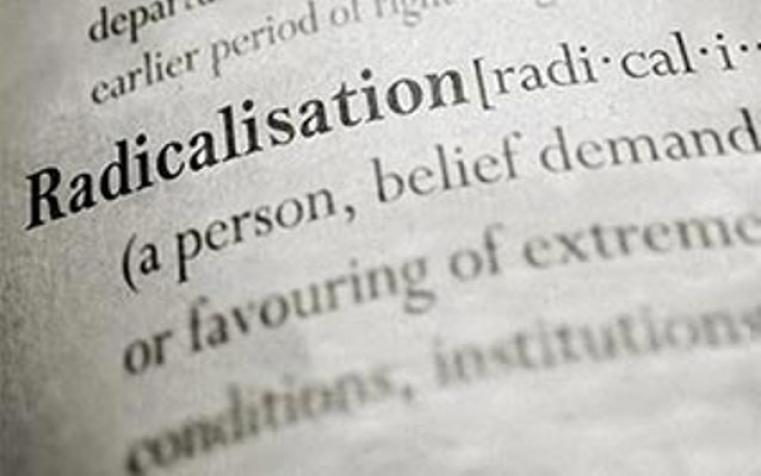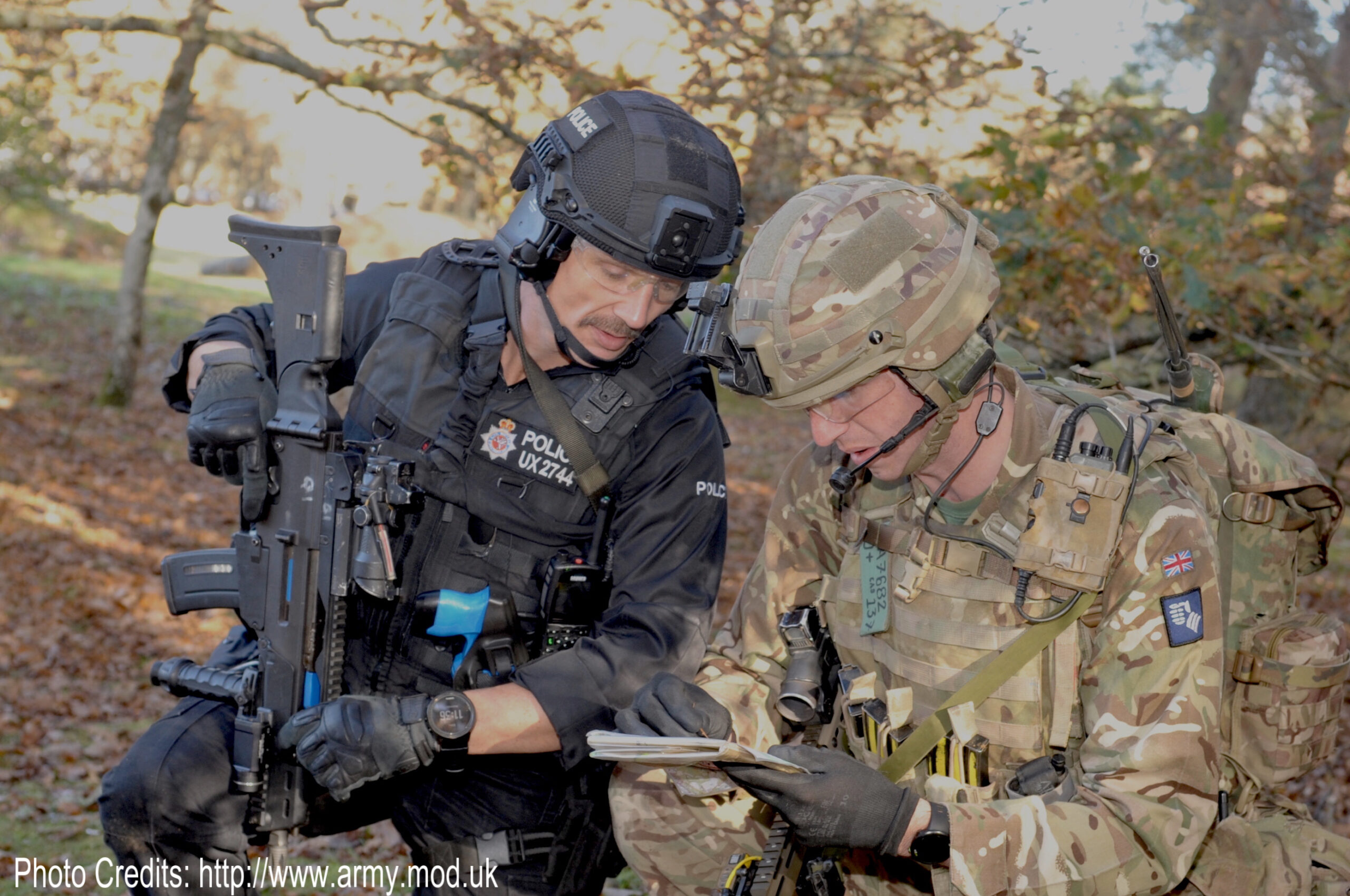Background
A report by Arun Kundnani, Visiting Assistant Professor of Media, Culture, and Communication at New York University, and Ben Hayes, a researcher and consultant specialising in human rights, applied ethics, and data protection, “brings much needed attention to the global deployment of increasingly standardized policies countering violent extremism”[1].
Kundnani and Hayes argue that entities and organisations concerned with human rights must understand the history of preventing and countering violent extremism as the language associated with it “finds its way into various policy, legal and political settings”. This involves being aware that violent extremism exists in many forms and is not associated with any one ideology or type of ideology[2].
The report demonstrates that “the definition of violent extremism is deeply contested”, and thus the employment of these concepts in institutions, policies, practices, and law needs to be done critically. It also notes that countering violent extremism (CVE) “is a concept which continues to lack firm legal grounding in international law, even as it is invoked to expansive regulatory ends”, perhaps demonstrating the current lack of critique afforded to CVE when it is employed. Thus, the report notes, “There is a pressing need for human rights and rule of law analysis to be applied to the expanding domain of CVE, and an urgency to benchmark the effects on the full enjoyment of human rights as a result of these policies and practices”[3].
The purpose of Kundnani and Hayes’ report is to engage these critical conversations, and to expose those international entities “advancing CVE policies and practices without a firm grounding in international law” with potentially intrusive effects on human rights[4].
The globalisation of CVE policies “is the most significant development in counterterrorism policy in the last decade”, according to Kundnani and Hayes. They note that terms such as ‘radicalisation’, ‘extremism’, and ‘violent extremism’ have become synonymous with terrorism because of the frequency with which they are used. This is “despite their quite different meanings, and the lack of clarity as to how these concepts relate to one another”[5].
CVE policies have “significantly widened the range of methods used by governments for countering terrorism and shifted their target from terrorist organisation to religious ideology and identity”. The employment of these wider methods comes from the characteristic understanding which underlies all CVE policy, that violent extremism can be prevented and reduced by addressing the underlying factors giving rise to it which involves the use of methods “beyond the use of military force and the coercion available under criminal law”. As such, “Supporters of CVE policies see them as complementing more conventional, reactive counter-terrorism methods, offering the possibility of a long-term and holistic solution to terrorism”[6].
Kundnani and Hayes’ examine the emergence and subsequent institutionalisation of CVE policy within the European Union, the United Nations, and the Global Counterterrorism Forum. The core ideas and principles of these policies will be highly consistent, while their implementation cannot always be expected to be. The international diffusion of CVE policy through these international bodies raises the prospect of repressive governments taking advantage of the contemporary hype around CVE and “using international funding to violate human rights in the absence of appropriate safeguards”, to use the words of Steven Hawkins, Executive Director of Amnesty International USA[7].
These violations and abuses of human rights are also taking place within individual Western states themselves, but the concern of Kundnani and Hayes in analysing CVE policy in these international bodies is that “the CVE framework has broken free of its national bounds just as those states … are coming to terms with the return of another kind of violent extremism”, that on the far right[8].
The rise of the right wing in the USA and Europe “has created something of a crisis of legitimacy for CVE policies, which are for obvious reasons unattractive to the Far Right when they target anything other than ‘Muslim extremism’”. Thus, “These political dynamics have fractured the international consensus on combatting violent extremism that emerged after ISIS declared it had established a ‘Caliphate’ in 2014, a consensus built largely on the back of the second Obama administration’s enthusiasm and support for CVE”. This has included the Trump administration’s withdrawal of support for both domestic and international ‘holistic’ CVE policies[9].
As the UN calls for its member states “to devise and implement national Action Plans”, Kundnani and Hayes note that “there is an urgent need for policymakers to reflect on whether CVE policies and practices that are anchored in a failed ‘war on terror’, which by any objective measure has only increased politically-motivated violence and extremism, are fit for purpose”[10].
Global Proliferation of CVE Policy
Kundnani and Hayes chart the global proliferation of CVE policy as arising from the adoption of Amsterdam’s domestic CVE policy (which focused on the ideological drivers of violent extremism and action which could be taken to prevent this) by Northern European countries, and Canada and Australia, among other countries[11].
International organisations then also developed CVE policies. The EU was the first to do so, and its efforts were prompted by the 2004 Madrid bombings. Kundnani and Hayes write, “By the end of 2004, plans were underway to develop an EU strategy and action plan to address radicalisation and recruitment, leading to the establishment of a European Commission expert network by September 2005. By December 2005, the UK’s Prevent policy was listed as one of the four strategic objectives of the new EU Counter-Terrorism policy”[12]. The UK and its Prevent policy, the 2015 version of which represented unprecedented peace-time levels of the embedding of national security surveillance in public life, thus was extremely influential “in shifting the EU in the direction of making policies that focus on the ideological roots of violent extremism”[13].
The U.S.’s approach to CVE was influenced by the Dutch and British emphasis on the role of religious ideology in radicalisation, and specifically ‘jihadi-Salafi ideology’. 2006 saw the launch of what Kundnani and Hayes describe as “intensive surveillance programs of Muslim populations in the U.S.” under the assumption that this would allow the detection of radicalisation[14].
However, it was under the Obama administration that CVE “came fully to the fore” in the U.S., initially characterised by an international rather than domestic focus. This included the funding of projects in Muslim-majority countries aimed at “delegitimizing the violent extremist narrative”, “developing positive alternatives for youth vulnerable to radicalisation”, and “building partner capacity to carry out these activities”. Projects have become more domestically focused since, which, again having been heavily influenced by Dutch and UK CVE initiatives, involve partnerships between law enforcement agencies, social service providers, educators, and community leaders in order to prevent and identify those at risk of radicalisation. The similarities between this strategy and the Prevent initiative are particularly striking[15].
The USA has also participated in wider CVE efforts. Between 2010 and 2011, the U.S. and EU engaged in “extensive dialogue” about CVE and U.S. interests helped structure the EU’s Radicalisation Awareness Network set up in 2011. The Obama administration’s support for CVE policies “provided a catalyst for international policy development that complemented efforts already underway at the European Union level”. Again demonstrating the strong coalition between this international group on CVE, the EU and the U.S., with other countries, formed the Global Counter Terrorism Forum (GCTF) in 2011 as an alternative to the UN’s CVE framework, which they perceived as “ineffective and hampered by concerns about human rights and the root causes of terrorism”. In 2016, the UN launched its Plan of Action to Prevent Violent Extremism and was calling on UN states to do the same[16].
However, in contrast to recent EU efforts to emphasise CVE’s focus on all forms of extremism, the Trump administration has emphasised its focus on “radical Islam” in its efforts, a change reflected in the redirection of funding to this area specifically[17].
The international interest in CVE, which is not only limited to the EU and UN frameworks, is problematic according to Kundnani and Hayes. They write, “none of these organisation have paused question the impact, legitimacy or effectiveness of the policies within the countries in which they were first developed”. The field is plagued by false claims of holistic methods to counter extremism, lack of discussion and inconsistencies about what violent extremism actually is and how it manifests, and the alienation of Muslim communities. The authors write that CVE policy makers “use the liberal language of community partnership, empowerment, and engagement, and yet they want to broaden the range of behaviours considered problematic and requiring government attention”[18].
Illustrating the lack of a clear definition of violent extremism in CVE literature, the authors point to the UK Prevent programme’s definition of extremism as “vocal or active opposition to fundamental British values, including democracy, the rule of law, individual liberty and mutual respect and tolerance of different faiths and beliefs”, which they say “is so broad and vague as to potentially catch large swathes of the population”. This is only one out of several definitions used by the UK government, some being used simultaneously within the same documents. It is this “abject lack of consistent definition” which “provides for the opportunistic and politicized implementation of CVE policies” and ultimately this has led to “a vastly disproportionate focus on Muslims”[19].
Despite these definitional ambiguities, CVE resources have been deployed fairly consistently. This is because, according to the authors, “practitioners are implementing policy in a broader political context that has powerfully embedded an implicit concept of violent extremism that associates it with “radical Islam” and thus the image of the “dangerous Muslim”. The influence of this political context means that “Those who seek to dissent from this approach and, for example, focus on Far Right terrorism in implementing CVE programmes go against the grain of public discourse and have to contend with powerful political opposition” even if statistically it can be shown that an emphasis on Muslim populations is not necessary. The lack of an evidence-based account of the causes of terrorism means that counter-terrorism agendas can be used unchecked and that “development, human rights, and conflict prevention goals that ought to be pursued for their own sake” become subsumed within it. The authors point to the example of the U.S. State Department’s and the UK Foreign and Commonwealth Office’s CVE programmes including “broader development goals, such as poverty alleviation and increasing cultural opportunities … yet there is no evidence to demonstrate that such a causal mechanism exists”. A similar lack of evidence surrounds the claim that religious ideology, and specifically Islamist ideology, acts as a “conveyor belt” towards terrorism, yet this theory has received a lot of attention within the CVE policy community[20].
A major strand in CVE policy is the use of government “soft-power” to “induce changes in cultural, religious, and political attitudes and opinions of targeted communities”. This has included the UK government funding chosen “grassroots” Muslim voices “who will advocate for this cultural change, through strategic communications, including through social media campaigns and through surveillance and individual ideological intervention”, and the U.S.’s and UK’s production of counter-narratives and propaganda. Such “soft-power” methods have also included the intervention of the government in theological debates in order to promote certain ‘types’ of Islam designed to explicitly differ from extremist narratives. The authors note that through doing this, “governments are taking on the role of “de facto theologians,” implicitly adopting an official interpretation of Islam”[21].
The problems with such “soft power” initiatives, as identified by the authors, are that they dissuade dissent from government-approved understanding of CVE which can marginalise the voices of those in the community who have legitimate concerns about CVE policy and foster distrust of all community advocates; they stifle transparency as CVE funding is often kept secret by its recipients for fear they will lose the trust of those they serve, undermining “the process of open and accountable debate that is essential to a healthy civil society”; they facilitate stigmatization through their focus on Muslims; they undermine secularism through sponsoring Muslim organisations and leaders despite the secular principles of neutrality and non-intervention in religion (this can also lead to religious communities being viewed as homogenous entities, which they are not); and they reinforce gender stereotypes by often supporting established male community leaders “on the grounds that their greater apparent influence makes them more valuable in messaging to Muslim audiences, or by supporting women in CVE initiatives on the grounds that they are “naturally predisposed to oppose religious extremism or because [they] are seen as strategically useful as the “heart” of families and communities”. The UK’s Prevent policy understands support for gender equality to be a litmus test for extremism (albeit only for the Muslim population), the danger with using gender stereotypes in CVE policy thus being “that issues of inequality are subsumed within a broader security agenda and the specific need to address women’s rights is marginalized”[22].
Surveillance is also a key aspect of most CVE policy, and it differs from the usual surveillance used by law enforcement and intelligence agencies to investigate counter terrorism. Firstly, it is not aimed at specific individuals who have been previously identified, but rather it aims to itself identify individuals. Also, it partners with non-policing agencies, such as medical and education professionals. The training of such non-policing professionals is a complex process and this thus involves the simplification of a complex field meaning the adequacy of the training they receive can be questioned. The authors note, “Given that there is no scholarly consensus on the process of radicalisation, there is actually no evidence-based knowledge to impart in CVE training on the indicators of radicalisation”. As a result, much of the training in. Is area “is devoid of substance and results in either [their] treating ordinary behaviour as suspicious or regarding legitimate forms of religious and political expression as problematic”. Examples of this in the UK context include a 10 year old child being referred to Prevent for requesting a prayer room at school and multiple students being referred for wearing “Free Palestine” badges to school. The partnerships between policing and non-policing agencies in CVE also means that the traditional trust between non-policing actors and those they serve can be undermined. Thus the autonomy of these actors must be ensured, and suitable measures to ensure accountability should be introduced to ensure “the intimacy and trust associated with work in community development, education, and child protection” is not exploited by the secrecy of the national security sphere[23].
CVE strategies and counter-radicalisation models increasingly use the Internet in order to realise their aims, and this has become increasingly important in light of the emerging threat of ‘remote radicalisation’. This has in some cases moved beyond the monitoring of online extremist content to the censorship of it “either by compelling internet service providers (ISPs) to block access by their customers, or pressuring social media companies to ban certain users or remove specific content”. The challenge of this approach is developing credible policies in this area which also respect fundamental human rights such as the right to freedom of expression. Many CVE censorship strategies are however promoted using extra-judicial strategies which mean necessary checks and balances can be avoided[24].
As Muslim communities are continuously and increasingly painted as security threats in political rhetoric across Europe and in the USA, Kundnani and Hayes point to the need to be vigilant about the globalisation of counter-extremism policies which result from this discourse. You can access the report here.
[1] Kundnani and Hayes, 2018, 2.
[2] Kundnani and Hayes, 2018, 2.
[3] Kundnani and Hayes, 2018, 2.
[4] Kundnani and Hayes, 2018, 2.
[5] Kundnani and Hayes, 2018, 2.
[6] Kundnani and Hayes, 2018, 3.
[7] Kundnani and Hayes, 2018, 3.
[8] Kundnani and Hayes, 2018, 3.
[9] Kundnani and Hayes, 2018, 3.
[10] Kundnani and Hayes, 2018, 3.
[11] Kundnani and Hayes, 2018, 8.
[12] Kundnani and Hayes, 2018, 8.
[13] Kundnani and Hayes, 2018, 7-8.
[14] Kundnani and Hayes, 2018, 8.
[15] Kundnani and Hayes, 2018, 8-9.
[16] Kundnani and Hayes, 2018, 9.
[17] Kundnani and Hayes, 2018, 9
[18] Kundnani and Hayes, 2018, 10.
[19] Kundnani and Hayes, 2018, 10-11.
[20] Kundnani and Hayes, 2018, 11-12.
[21] Kundnani and Hayes, 2018, 12-13.
[22] Kundnani and Hayes, 2018, 13-14.
[23] Kundnani and Hayes, 2018, 14-15.
[24] Kundnani and Hayes, 2018, 14-15.
Sources
Kundnani, A. and Hayes, B. (2018) ‘The globalisation of Countering Violent Extremism policies: Undermining human rights, instrumentalising civil society’. Transnational Institute. Amsterdam: Transnational Institute.






